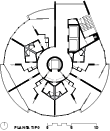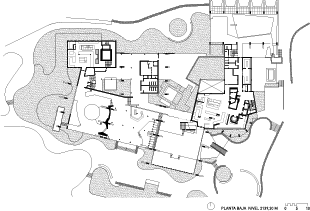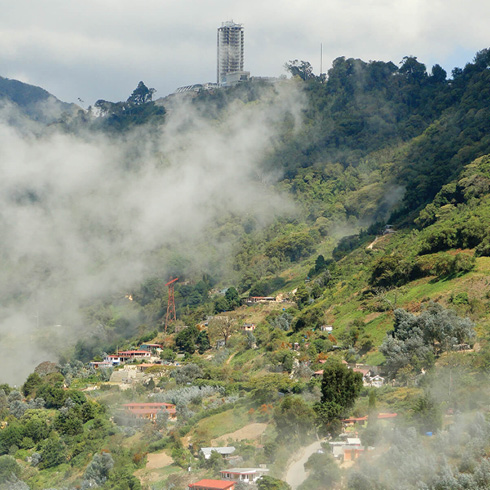EA-16
The idea of conquering the summits of the coastal range mountains and communicating the valley and the coast through mechanical means goes back to the late nineteenth century. But it is mid-twentieth century when the old ideas of a funicular proposed in 1934 by Fred Goetsch Goeschel take shape with the construction of the cable car system, whose protagonist is the majestic Hotel Humboldt. Designed during the Pérez Jiménez dictatorship, the hotel was set on a splendid geographical terrace with views to the sea and the valley, in order to use the enormous scenic and tourist potential of the city’s geography. Built in 9 months by Empresa Venezolana Eneca and opened on December 29th 1956, it was initially handed over to the Sheraton hotel chain as part of a series of tourist spots installed along the central coast and Caribbean islands. Crowning the summit of the Ávila mountain, at 2250 masl, it connects to the city with the Maripérez cable car station, and to the coast with Parque Galipán and El Cojo stations. The hotel solution, a 19-story 70-room vertical tower with a round floor plan, permitted a 360 degree visual with impres–sive views over the surrounding geographical setting. Akin to the language of international modern architecture and to Brazilian architecture with its bold free forms in the vaulted structures supported by arches which make up the service areas, the glass and aluminum tower is supported by a series of concrete pe-rimeter columns linked to a central cylindrical screen. The five attached vaults, connected inside with bridges and half-levels, allow large spans and incorporate the landscape with large glass windows. To the north, a single vault houses the swimming pool, while the others have the bar, restaurant, discotheque and services. Inside, the nobility of its finishes is displayed in the mosaic floors of green jasper from Guayana, the great glazed ceramic mural, copper chimneys, bronze faucets and marble floors. The hotel, which at night rises at 2140 masl like a beacon over the city, is located over a 700 meter long system of lookout terraces along the summit, whose project by Brazilian landscape architect Roberto Burle Marx never materialized. The hotel, which has been closed and inactive since the 60s, and has undergone internal renovations, still waits to be rescued to shine on the top of the Ávila, as an icon of Venezuelan architecture.

planta-tipo

planta-baja



